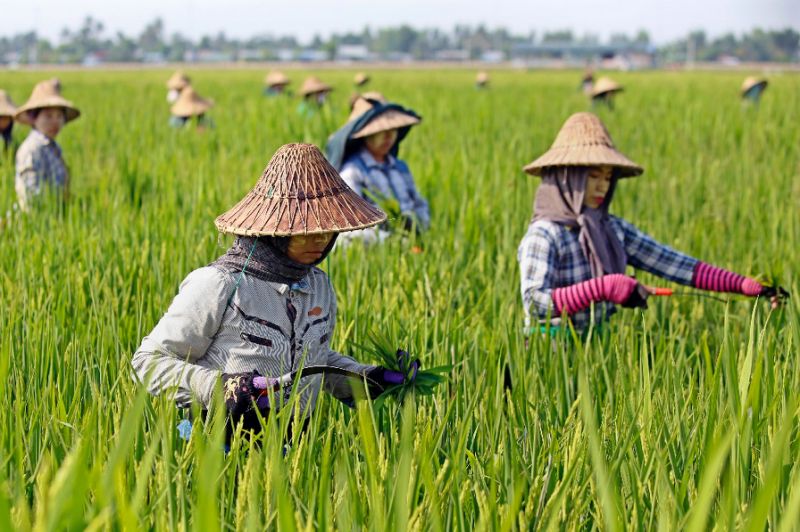
The change could be particularly dire in southeast Asia where rice is a major part of the daily diet, said the report in the journal Science Advances.
"We are showing that global warming, climate change and particularly greenhouse gases -- carbon dioxide -- can have an impact on the nutrient content of plants we eat," said co-author Adam Drewnowski, a professor of epidemiology at the University of Washington.
"This can have devastating effects on the rice-consuming countries where about 70 percent of the calories and most of the nutrients come from rice."
Protein and vitamin deficiencies can lead to growth-stunting, birth defects, diarrhea, infections and early death.
Environmentalists say climate change threat to food security
Countries at most risk include those that consume the most rice and have the lowest gross domestic product (GDP), such as Myanmar, Laos and Cambodia, Drewnowksi said.
The findings were based on field studies in Japan and China, simulating the amount of CO2 expected in the atmosphere by the second half of this century -- 568 to 590 parts per million. Current levels are just over 400 ppm.
For the experiments, 18 different strains of rice were planted in open fields, surrounded in certain areas by 56-foot wide (17-meter) octagons of plastic piping that released extra CO2.
According to study co-author Kazuhiko Kobayashi, a professor at the University of Tokyo, the experiment is designed to be more accurate than growing in a greenhouse.
Study reveals worst-case global warming scenarios not credible
"This technique allows us to test the effects of higher carbon dioxide concentrations on plants growing in the same conditions that farmers really will grow them some decades later in this century," said Kobayashi.
Researchers found that iron, zinc, protein, and vitamins B1, B2, B5, and B9 -- which help the body convert food to energy -- were all reduced in the rice grown under higher CO2 conditions.
"Vitamin B1 (thiamine) levels decreased by 17.1 per cent; average Vitamin B2 (riboflavin) by 16.6 per cent; average Vitamin B5 (pantothenic acid) by 12.7 per cent; and average Vitamin B9 (folate) by 30.3 per cent," said the report.
On average, protein content fell 10.3 per cent, iron dropped eight per cent and zinc was reduced by 5.1 per cent, compared to rice grown today under current CO2 conditions.
Vitamin B6 and calcium were unaffected, and vitamin E levels rose for most strains.
The reasons for the changes have to do with how higher CO2 affects the plant's structure and growth, increasing carbohydrate content and reducing protein and minerals, said the study.
Higher CO2 means less exposure to nitrogen, which also may affect vitamin content, researchers said.
Not all rice varieties saw the same drops in nutritional value, raising hope that future research could help farmers develop strains of rice that would be more resilient to atmospheric changes.
A separate study out last year by researchers at Harvard University found that global warming would cut protein in a number of key staples, including rice, wheat, barley and potatoes.
The result: an additional 150 million people globally may be at risk of protein deficiency by 2050.



1725967717-0/Untitled-design-(3)1725967717-0-165x106.webp)
1719925273-0/BeFunky-collage-(46)1719925273-0-165x106.webp)
1725131485-0/unrwa-(2)1725131485-0-270x192.webp)











COMMENTS
Comments are moderated and generally will be posted if they are on-topic and not abusive.
For more information, please see our Comments FAQ